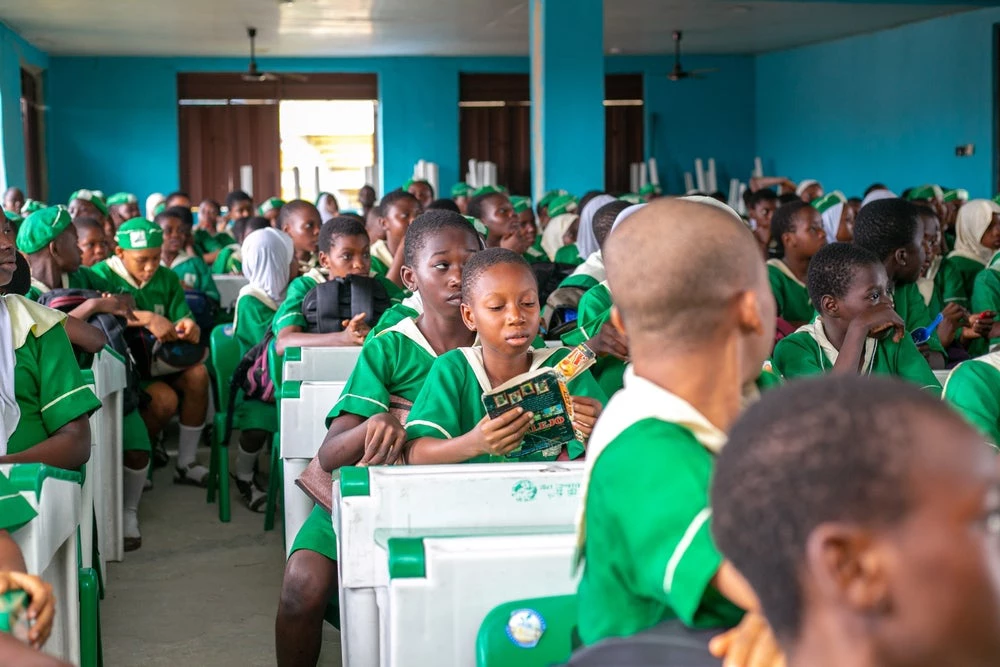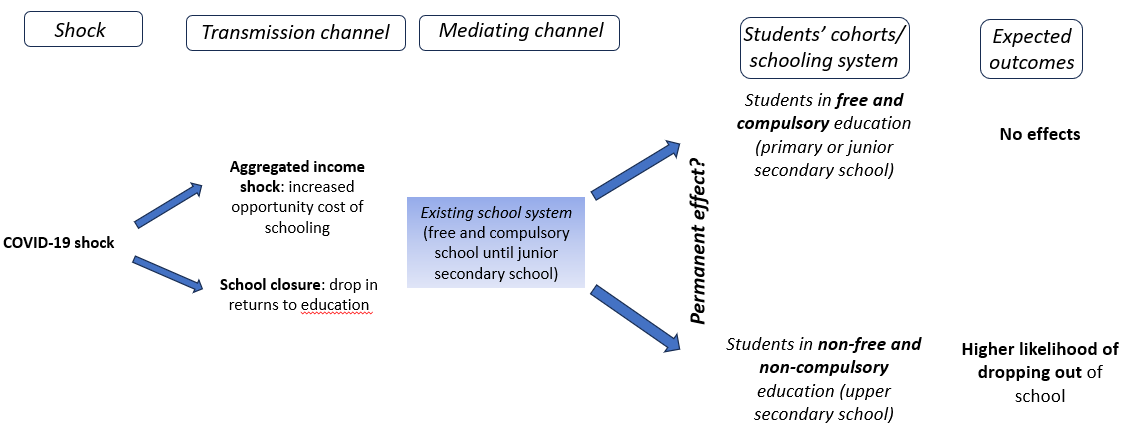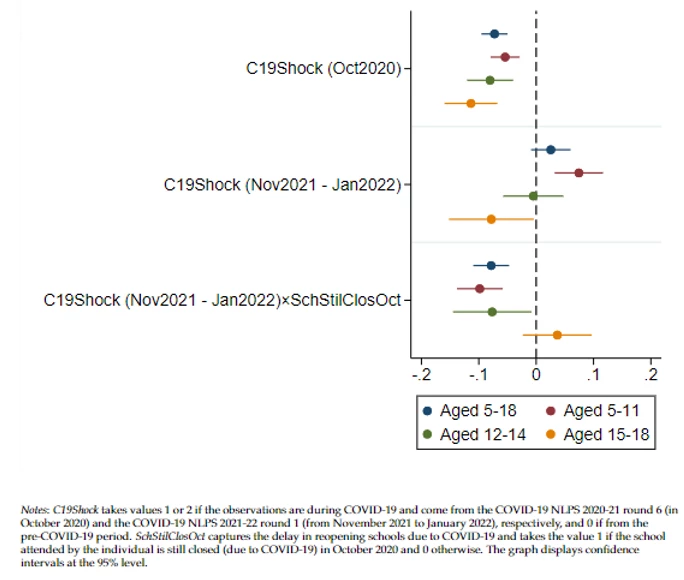
Recurrent and intensifying shocks—driven by extreme weather events, pandemics, and conflicts—have cast a long shadow over the timely realization of the Sustainable Development Goals by 2030. In research and policy circles, attention has been given almost exclusively to post-shock remedial interventions. However, interventions preceding shocks are increasingly seen as preferred alternatives to enhance societies’ ability to cope with and recover from shocks.
Our new paper “Free compulsory education can mitigate COVID-19 disruptions’ adverse effects on child schooling” focuses on the role of pre-existing policies, such as free compulsory education laws, in weathering the adverse effects of COVID-19 containment measures on children's school attendance.
During our research, we found two intriguing pathways that can potentially steer long-lasting impacts of COVID-19 containment measures on the school attendance of young students.
Let's take a closer look.
The pathways
The impact pathways are described in Figure 1. To begin with, there is substantial evidence indicating that containment measures, including businesses’ lockdowns and travel restrictions, have caused disruptions in food supply chains, resulting in higher food prices—and then reducing income for vendors and increasing food insecurity.
All these factors are known to increase households' monetary and non-monetary costs of investing in their children's education, compared to the value children might generate if they were working or if they would get married.
In contexts where child labor or child marriage—through bride price —can be a source of income, it is generally expected that low-income households (with little-to-no access to credit) use of these practices to cope with economic challenges tied to containment measures during the COVID-19 pandemic. As these cultural practices are known to induce permanent school dropouts, implementation of COVID-19 containment measures may have permanent negative effects on school attendance in communities where child labor and/or child marriage are customary.
A second point to highlight is that evidence shows that the closure of schools to contain the pandemic increased learning losses. This, in turn, may have affected parents’ assessment about investing in their children’s education, leading children to permanently dropping out of school, particularly those whose education involves fees or is no longer compulsory.
Against this background, our paper documents the effects of COVID-19 containment measures on children's school attendance, using the data from the Nigeria COVID-19 National Longitudinal Phone Survey (COVID-19 NLPS) 2020-2021, Phase 1 and the Nigeria - National Longitudinal Phone Survey (NLPS) 2021-2023, Phase 2, which is being implemented by the National Bureau of Statistics of Nigeria with support from the World Bank Living Standards Measurement Study (LSMS) program.
Temporary or permanent effects?
One main concern about COVID-19's containment measures in Nigeria is that free compulsory education only covers schoolchildren up to junior secondary education, corresponding to the first 9 years of schooling and starting when they are 5 years old.
Upper secondary education, for children aged 15-18, is left out of compulsory education, suggesting children in that age group face a higher risk of school dropout due to income volatility, caused by seasonal fluctuations in labor and shocks, especially in rural areas. Our paper tests this hypothesis by studying the impact of COVID-19 containment measures on school dropout probabilities, conditional on schooling being free and compulsory (see Figure 1).
Figure 1: Impact pathways of COVID-19 shock on education

In a preliminary version of this work, we showed that COVID-19's containment measures reduced the school attendance of children aged 5-18 right after schools reopened in October 2020. This effect persists after breaking down the sample by age group, including the 5-11 (primary school), 12-14 (lower secondary school) and 15-18 (upper secondary school or higher).
Furthermore, the impact of these measures varies with age, hitting its lowest point for children aged 5-11 and peaking among those aged 15-18, who are no longer obliged to attend school. Our paper investigates whether these effects last over the medium term. One may argue that these effects are merely temporary and may either disappear with time or be reversed.
The analysis shows that approximately 15 months after the reopening of federal schools in October 2020, the adverse effects of COVID-19 containment measures are permanent only for children aged 15-18 - those beyond the age of compulsory education. Figure 2 reports the main coefficients plotted by relevant age groups and shows the short-term (Oct2020) and longer-term (Nov2021 – Jan2022) impacts, including the mediating effect due to the delay in schools re-opening.
For this group, the decrease in school attendance remained at a significant 7.8 percentage points, even when schools reopened. The risk of permanent dropout in younger cohorts, on the other hand, is estimated to increase only if school reopening faced significant delays (see Figure 2).
Figure 2: Main coefficients plot, by age groups

The fact that the significantly higher likelihood of dropout among children aged 15-18 persists well beyond a year after schools fully reopened underscores the importance of extending free compulsory education throughout secondary education. Such policy change would undoubtedly boost preparedness for future crises that might otherwise threaten hard-earned human capital gains.





Join the Conversation